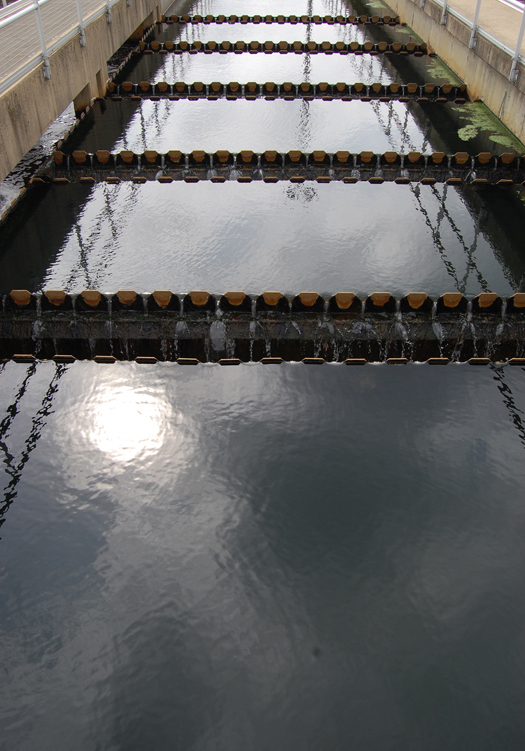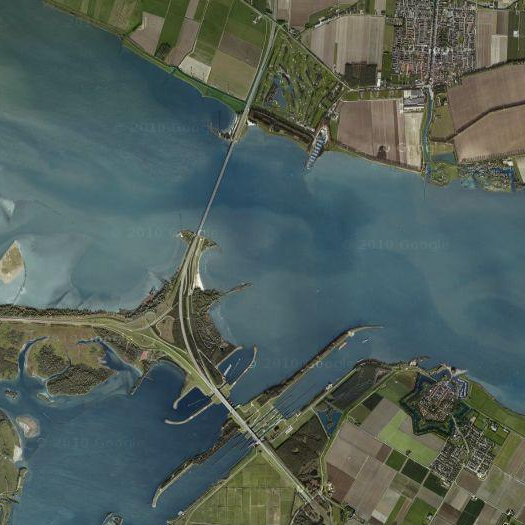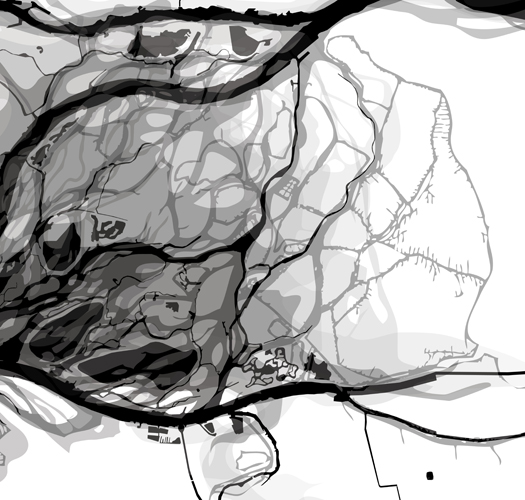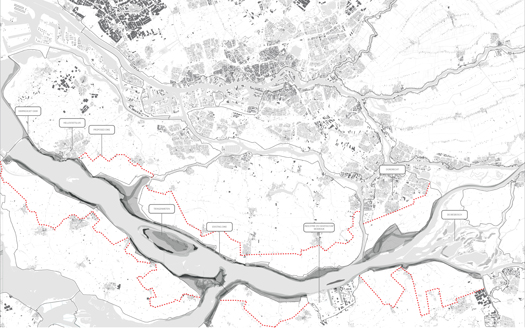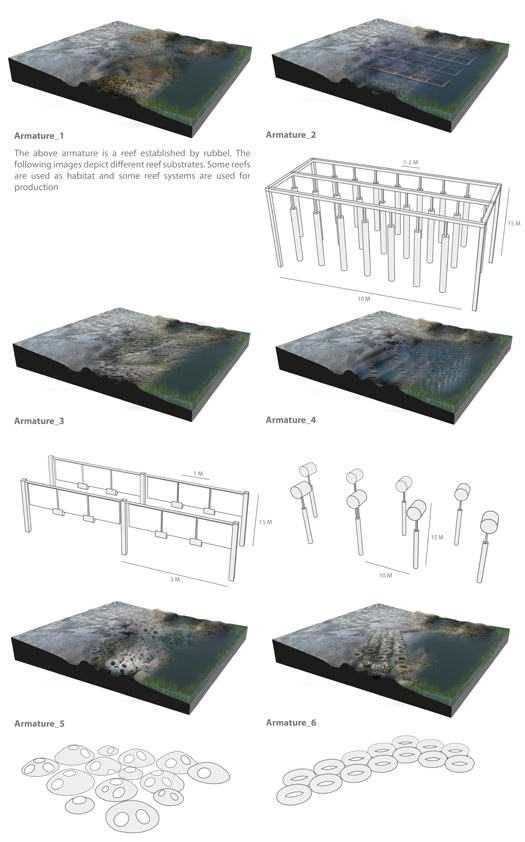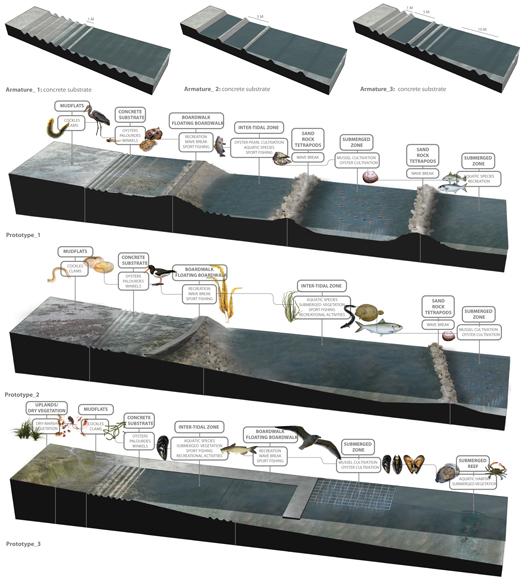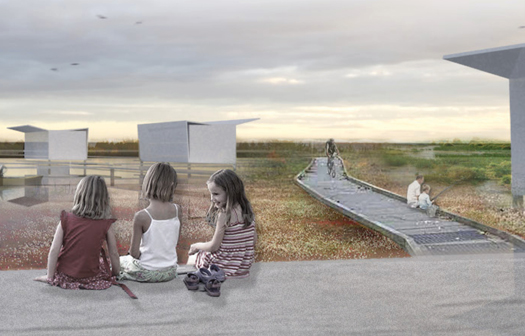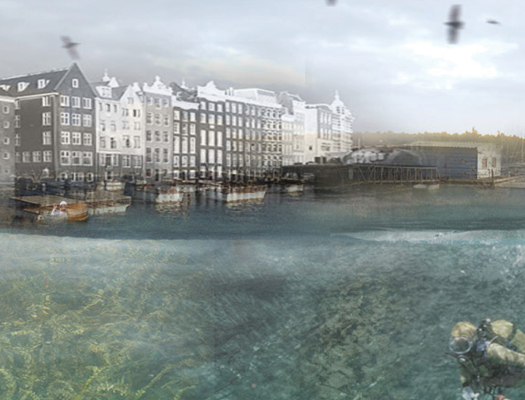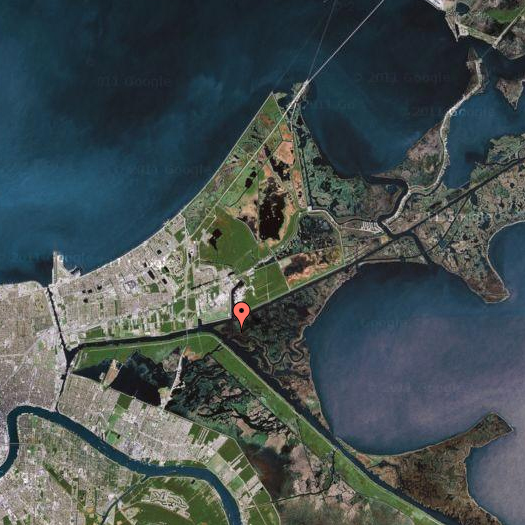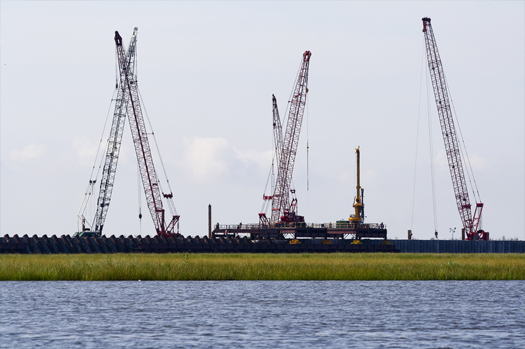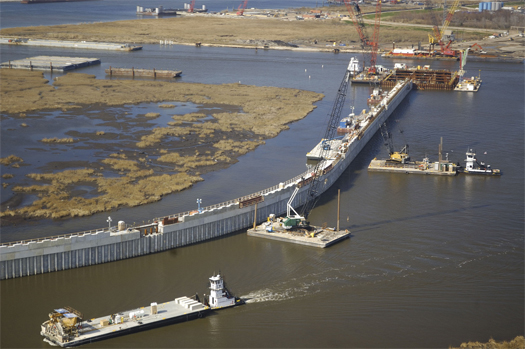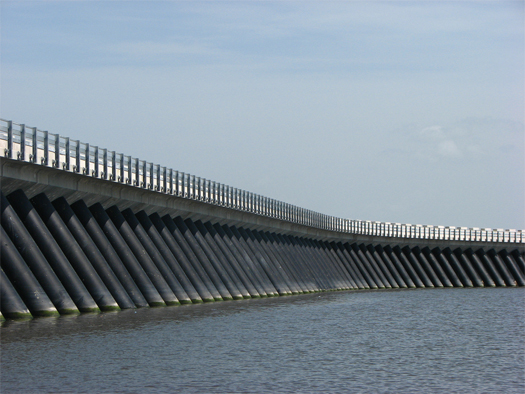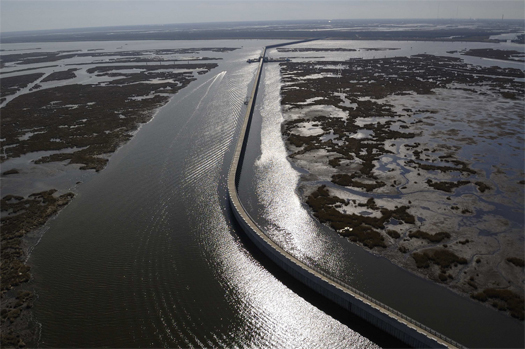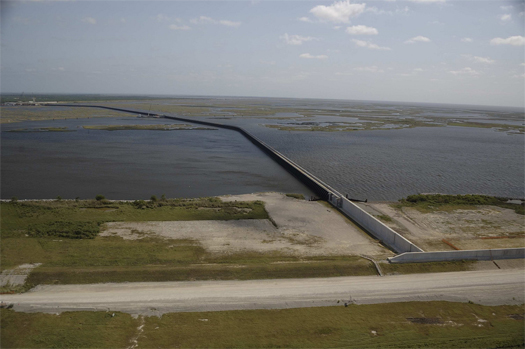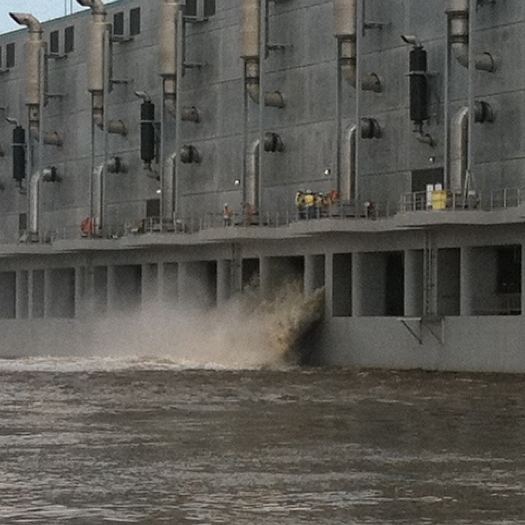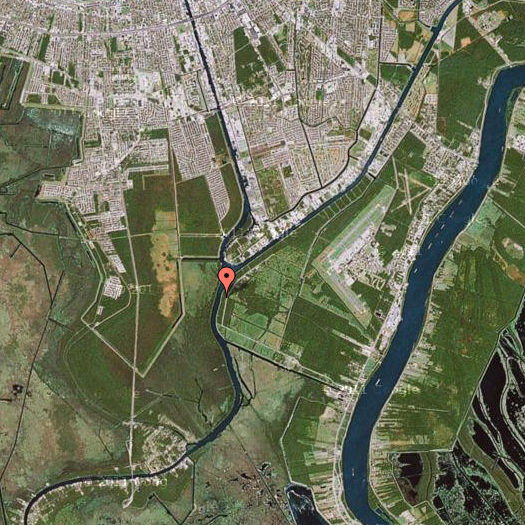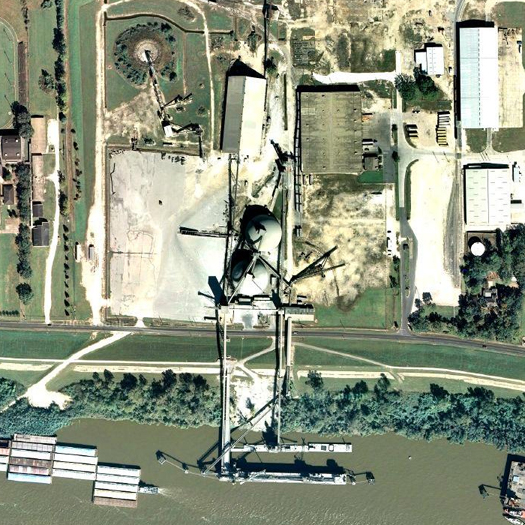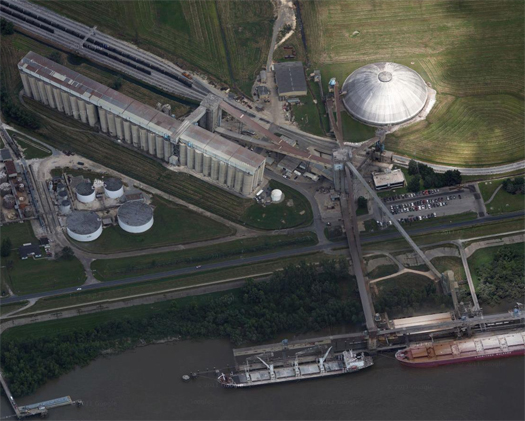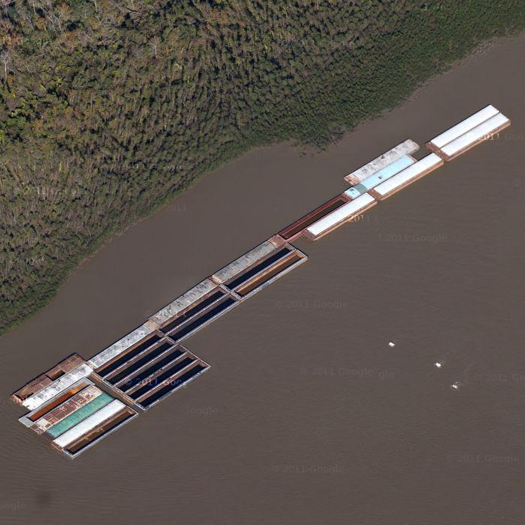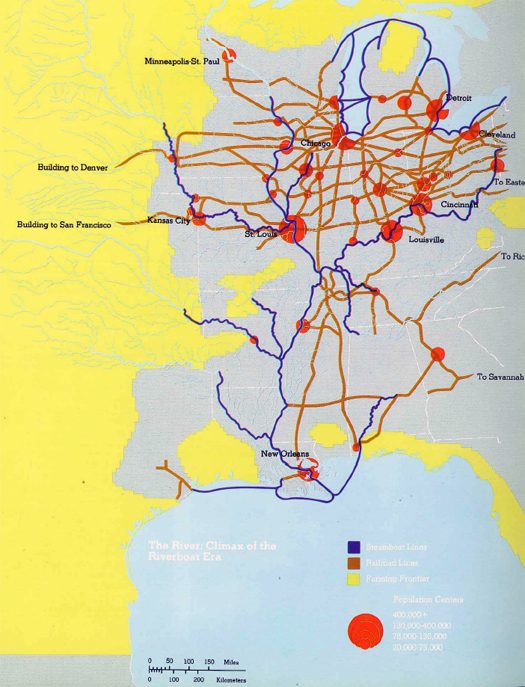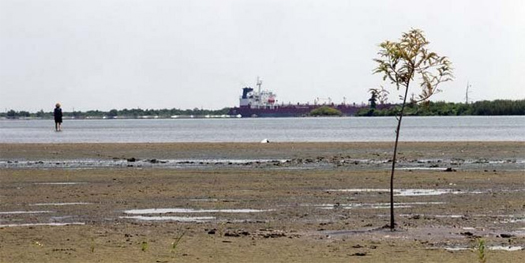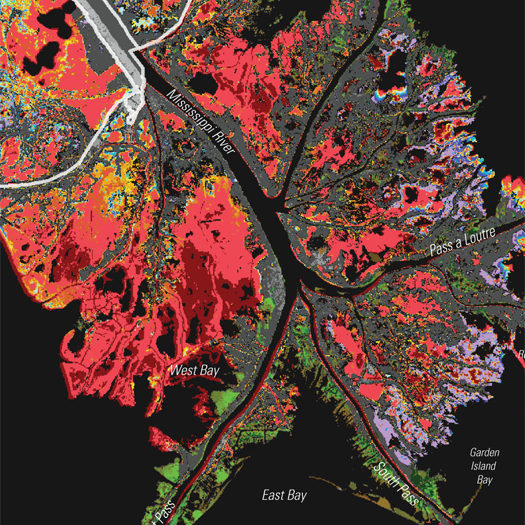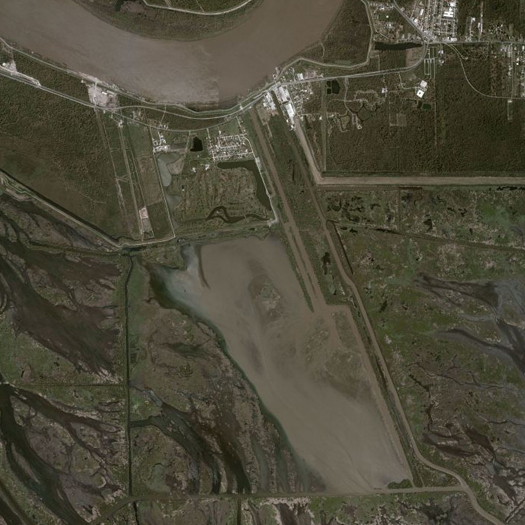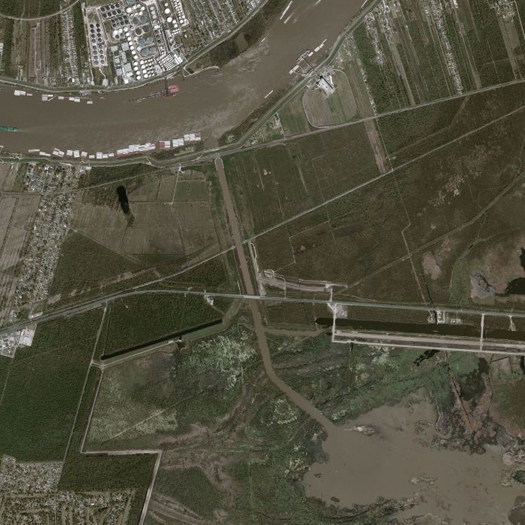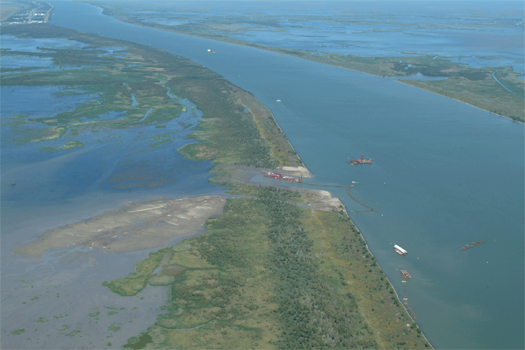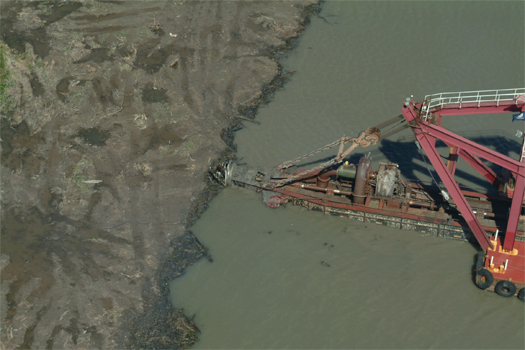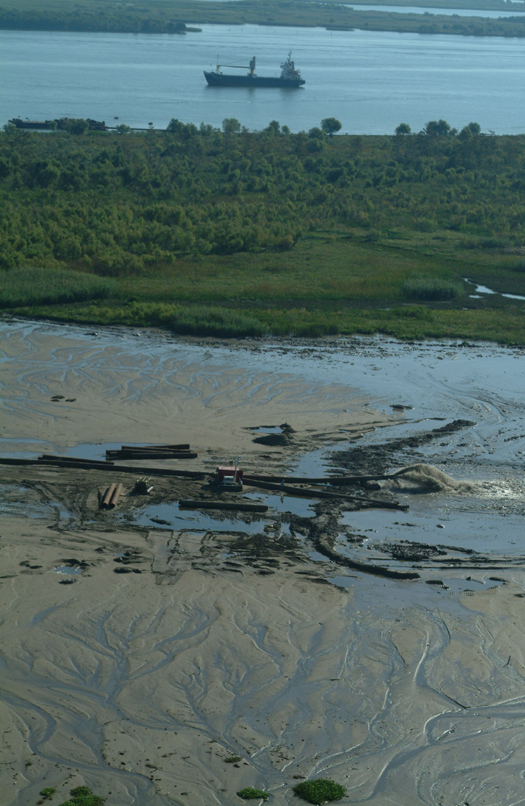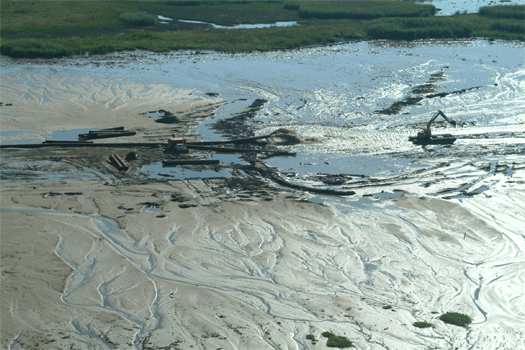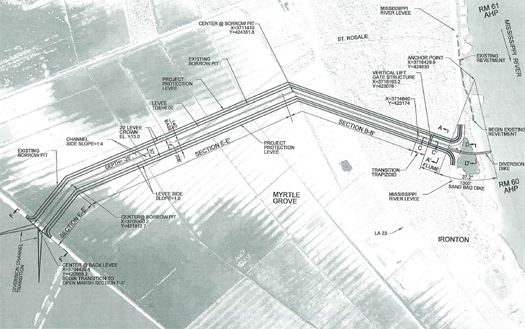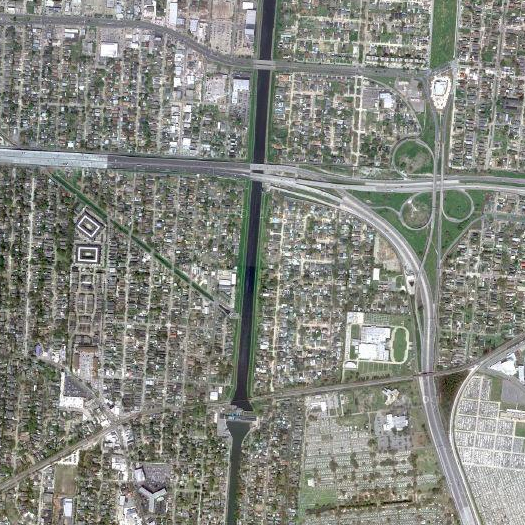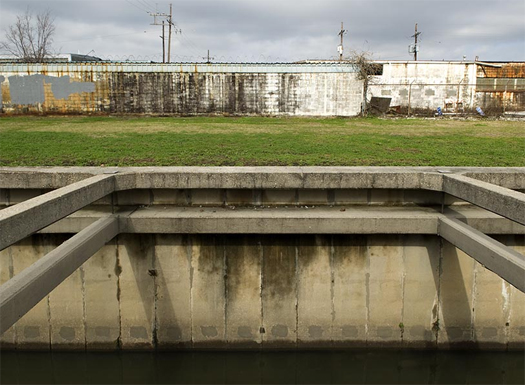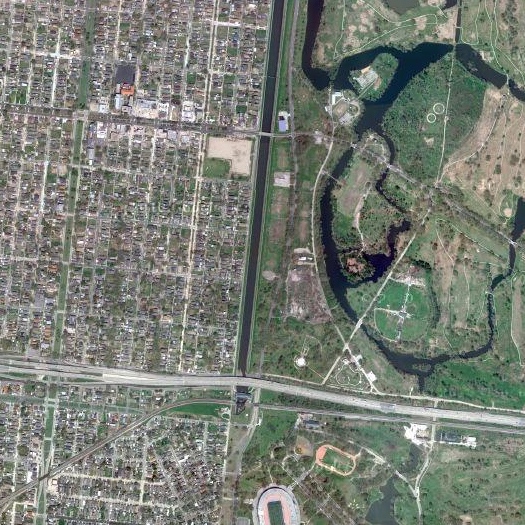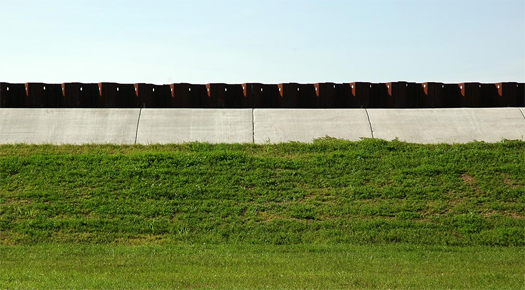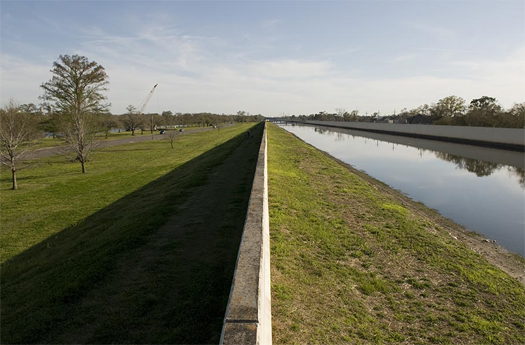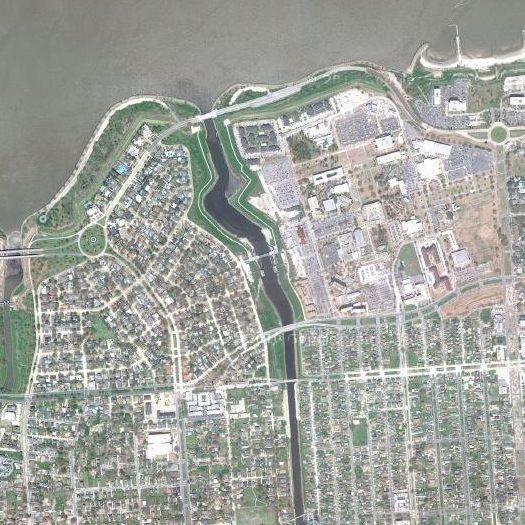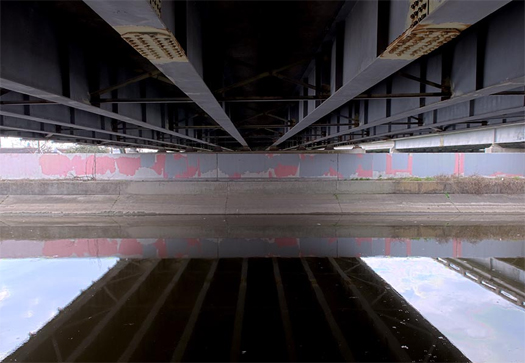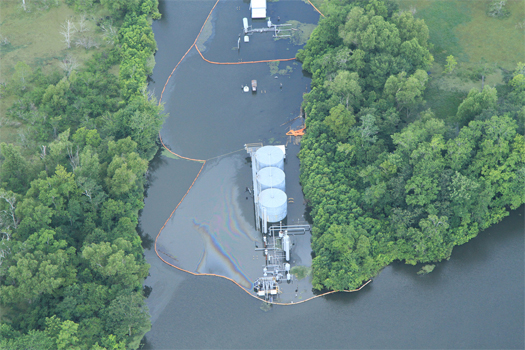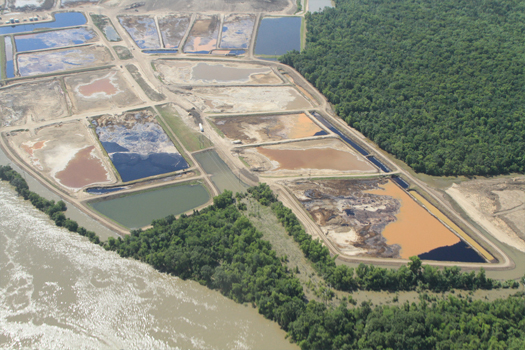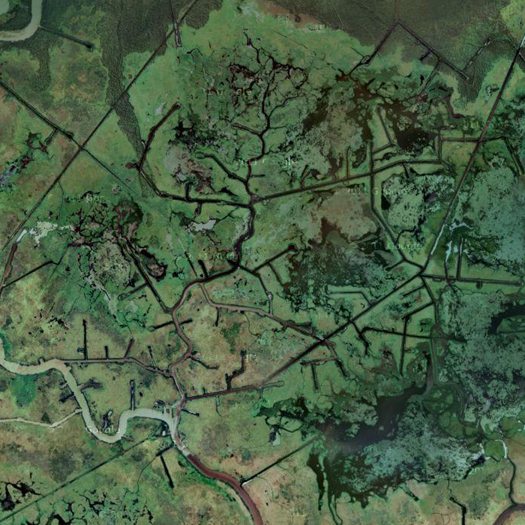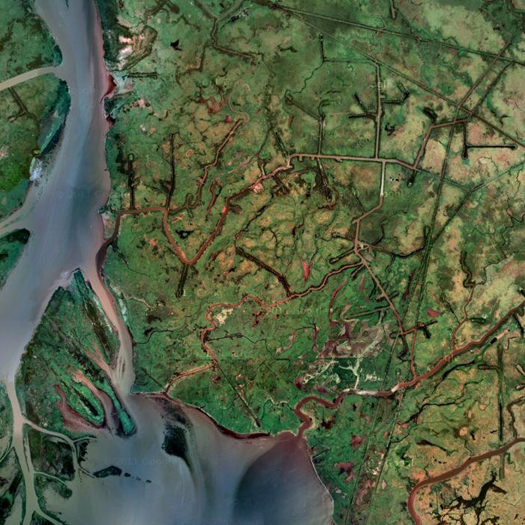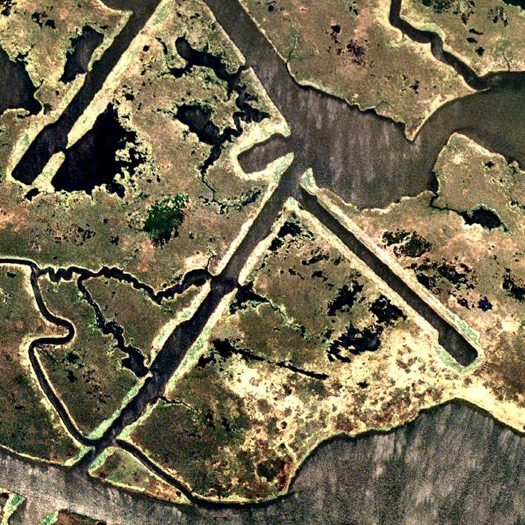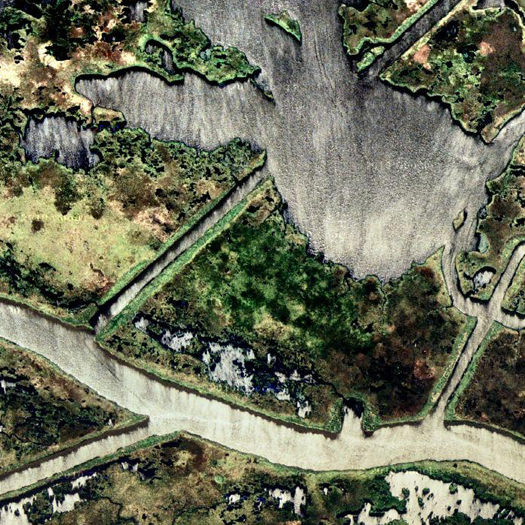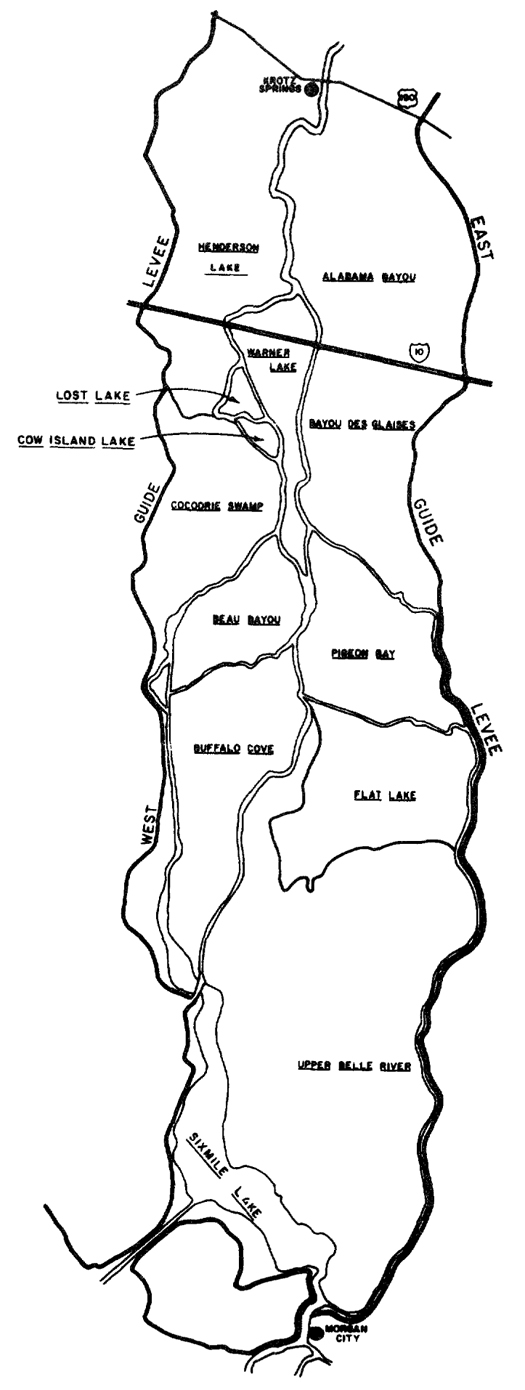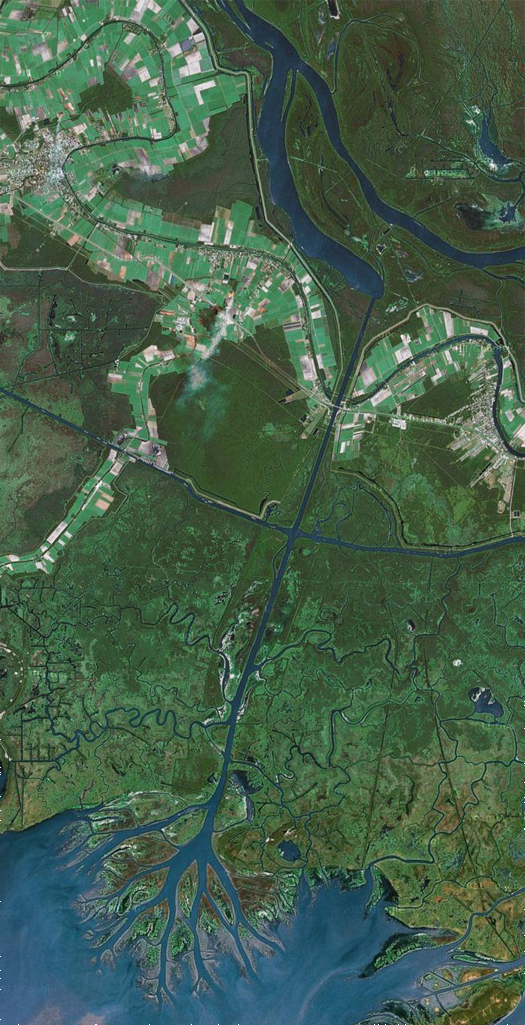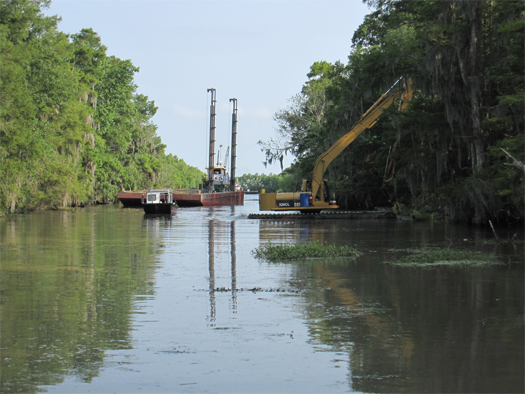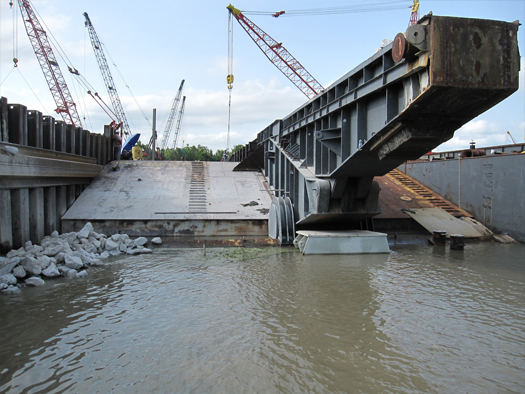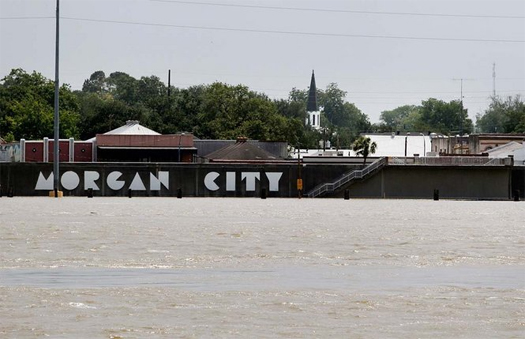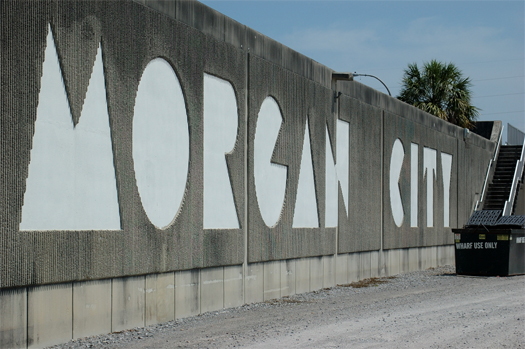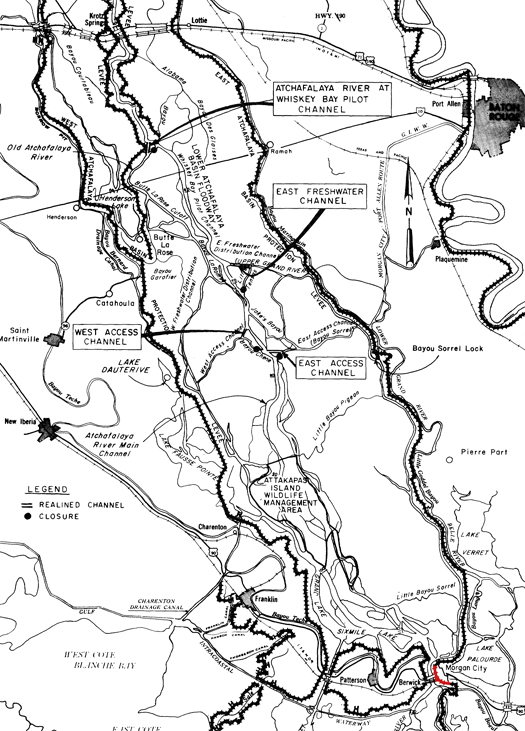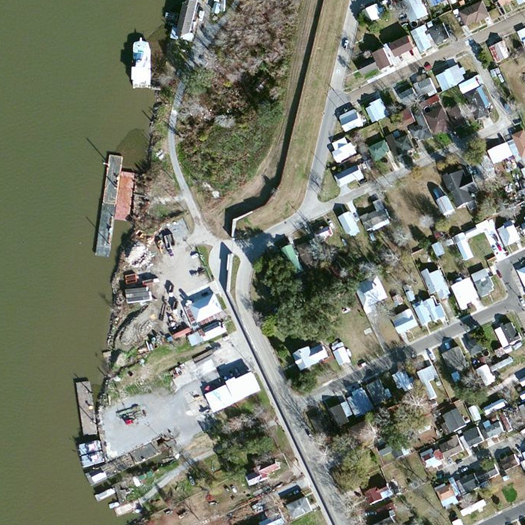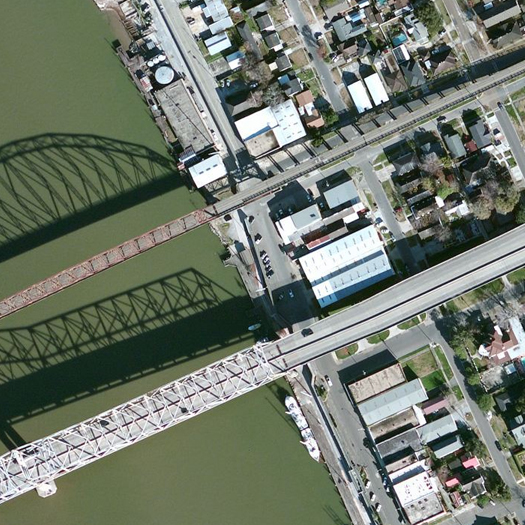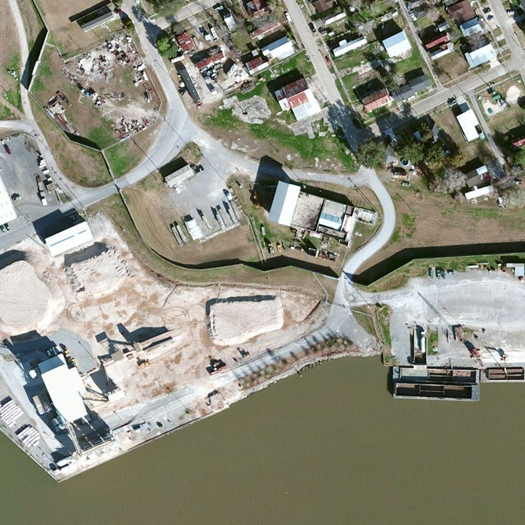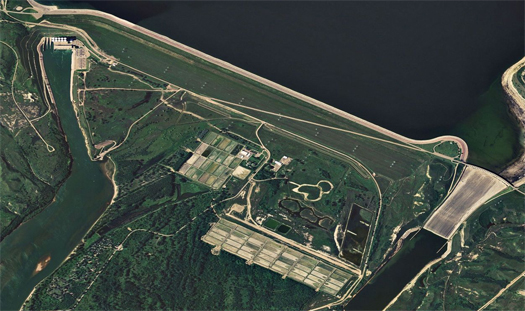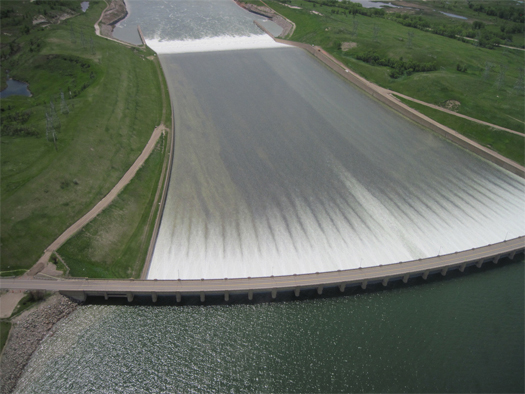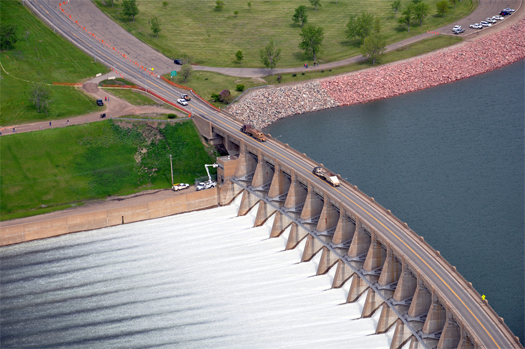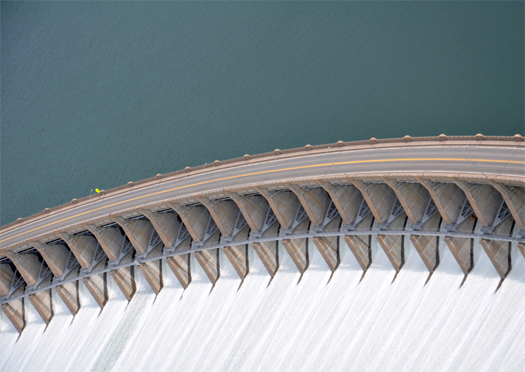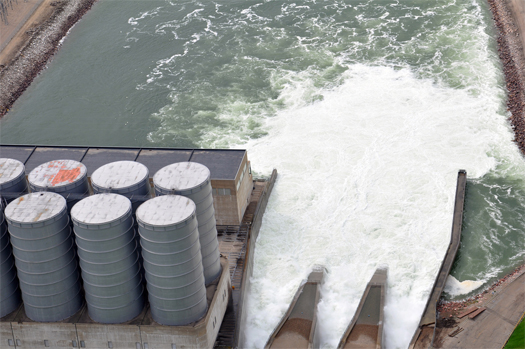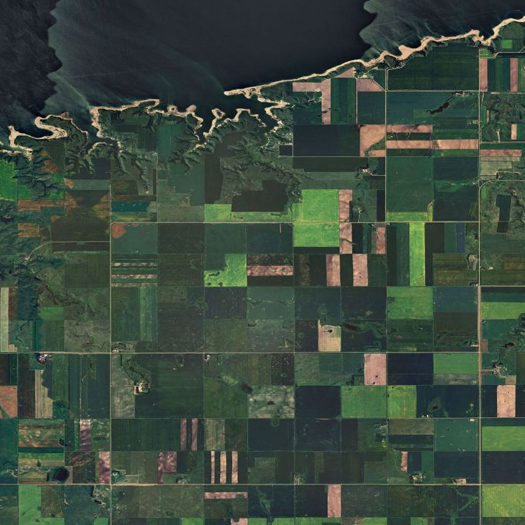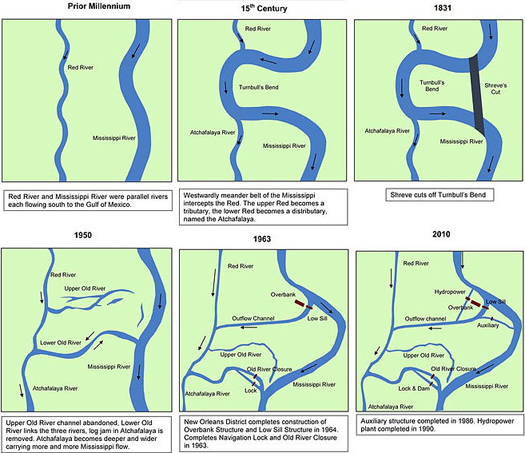The following piece is a part of Border Town’s supplementary online discussion, which is collated at the Border Town website. Border Town is a “10-week, multi-participant collaborative design studio that investigated the conditions that surround life in cities situated on borders, divided by borders, or located in conflict zones” this summer, led by Tim Maly and Emily Horne. Border Town is currently exhibiting at the Detroit Design Festival; the exhibition runs through September 26.
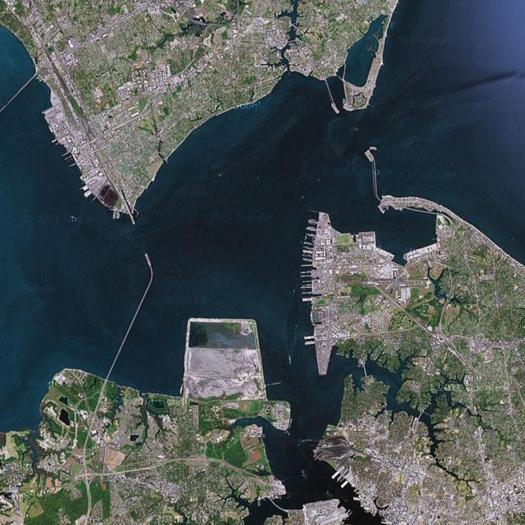
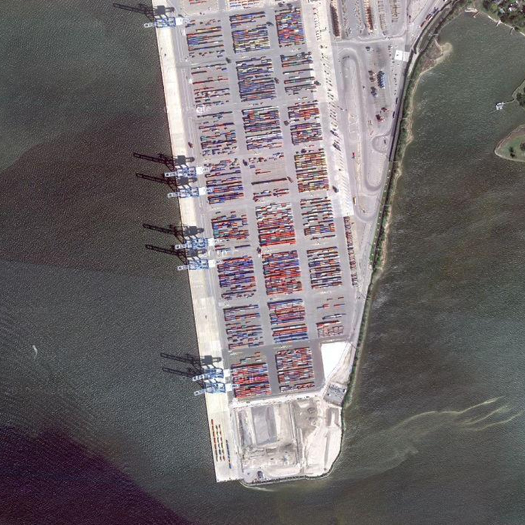
[Top, the Hampton Roads region, home to the Port of Virginia, and above, the Norfolk International Terminal.]
When a cargo container is offloaded at one of the marine terminals of the Port of Virginia, a funny thing often happens.
Let’s say that the container — which might, for instance, have been loaded in Hong Kong, transited the Pacific Ocean, and crossed the American continents at the Panama Canal — is picked off a container ship by a container gantry crane at the Norfolk International Terminal, one of the four terminals within the Port of Virginia’s distributed network of terminals around the Hampton Roads region. There is a good chance that it will then be loaded onto a double-stack railcar by a straddle carrier or rubber-tyred gantry crane, and travel around two hundred miles on the tracks of the Norfolk-Southern Railway to the small city (calling it a city is rather generous) of Front Royal, where it will be offloaded at the Virginia Inland Port. Here’s the funny thing — only then do its contents finally enter the United States of America.
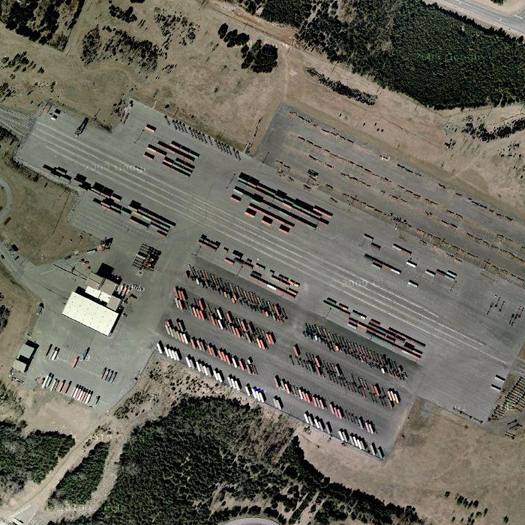
[The Virginia Inland Port in Front Royal, Virginia.]
When the shipping container is (rightly) treated as a transformative technology, it is usually the physical properties of the container that are cited as generating transformations: the standardized measurement of the twenty-foot equivalent unit both permitting and demanding the standardization of port spaces, container ships, and distributive mechanisms like tractor-trailers and railcars, for instance. But the legal properties of the container (which, it should be noted, are only possible because of the physical capacity of the container to be sealed in such a manner that opening it permanently breaks the seal) are also transformative, and it is these weird legal properties that produce the funny situation of goods being two hundred miles inside a nation’s borders and yet still, for all intents and purposes, in a foreign country.
In the rather dry manner typical of government bureaucracies, the U.S. Customs and Border Protections explain this in one of their key publications, “Importing into the United States: A Guide for Commercial Importers” (pdf):
“Imported goods are not legally entered until after the shipment has arrived within the port of entry, delivery of the merchandise has been authorized by CBP, and estimated duties have been paid.”
The shipping container, you see, is something of a minature, portable, re-definable border. When it is sealed, goods are frozen in their country of origin, and cannot be removed from that country through any physical operation short of breaking the seal and stealing them. In this way, the shipping container is like a bizarre embassy: portable instead of stationary, for goods instead of people, logistical instead of architectural, but similarly self-contained and exported territory. Both the shipping container and the embassy reveal that borders are, at the same time, fictional — receiving their status as entities that exist through the agreement to treat them as though they exist, and thus being as malleable as we collectively decide we want them to be — and quite capable of affecting material relations, as noting that they are fictional by no means implies that they lack the capacity to draw geographies or generate landscapes.
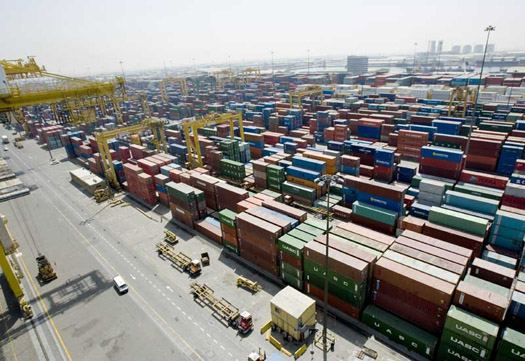
[Port of Hong Kong; source.]
Having been granted this status, the container becomes legally frictionless, able to transcend borders and geographies freely, at least until it arrives at a customs station. To move through a country, a container never needs to enter that country; it can exist solely within the legal weightlessness of foreign trade zones1, even serving as a microcosm of those legal states when it exits their spatial boundaries (such as when it travels from a seaport to an inland port of entry). The goods in a container loaded and sealed in Hong Kong remain legally in China, no matter what soil the container rests on, until such a time as the owner decides to have them processed at a customs station.
Yes, this is a restricted geography. A container cannot arrive at a seaport, bypass customs, and travel freely within the country of destination; but within that restricted geography — along rail-lines and in anonymous stacks — the container is oddly weightless. No person could arrive at the border of the United States, declare himself a microcosm of China, and travel freely to the airport customs line of her choosing; the comparative freedom granted to the movement of goods seems appropriately representative of the relative primacy of consumer goods in the post-Fordist economy. Perversely, the container is even co-opted by people desperate to emigrate from or immigrate to certain nation-states — essentially, people attempt to pass as goods, in order to obtain the legal advantages conveyed on goods.
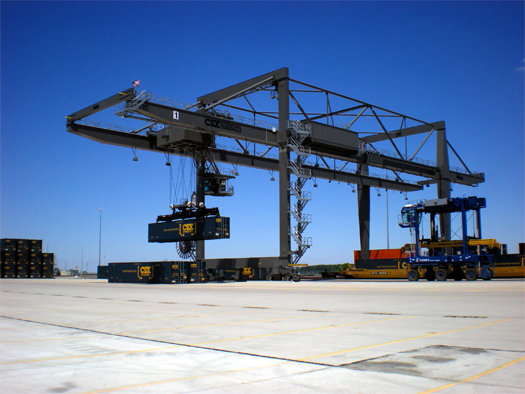
[A gantry crane operates at an intermodal facility in North Baltimore, Ohio; source.]
The connection may not be immediately obvious but this — all of this, including the transformative physical properties of the container briefly noted above — is why the architectural fetish for the form of the container is ultimately unsatisfying. Even though the spatial qualities of the box are transformative, the form of the container is ultimately not what it is interesting about the container; what is interesting and important about the container is the way that it enables and generates new landscapes. This is not to say that is impossible to do interesting architecture with shipping containers. It is just as possible to do interesting architecture with shipping containers as it is possible to do interesting architecture with chain-link fence, corrugated aluminum, or any other industrial material. But the power of the shipping container cannot be appropriated by using the object in alternate contexts, because the power of the object comes from its capacity to shape its context.
Keller Easterling said this well in a 1999 piece for Perspecta, “The New Orgman”; though the portion of the piece that we quote here refers to the architecture of mid-century suburbia, the piece later touches on ports and containers, and the quote applies equally well to the container:
“The architecture [is] organizational. The organizational protocol [is] not merely that which facilitate[s] architecture; it [is] architecture… For architects, nouns and objects that can be identified with formal nomenclature are more familiar than processes, verbs, and games. It is hard to grasp the idea that the medium is the message or that the organization is the content.”
Hard, but worthwhile.

